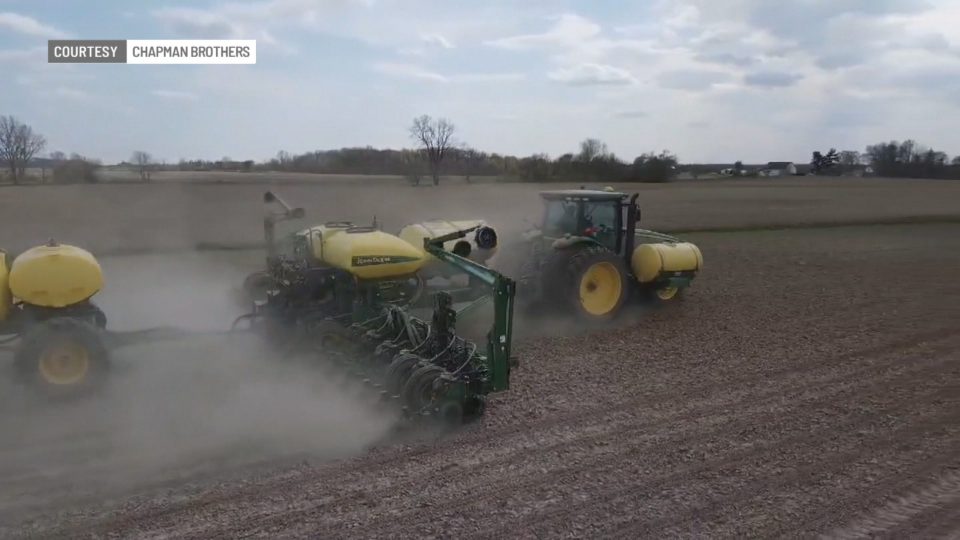SPRINGPORT, Ind. (WISH) — A crop and livestock farmer says the war in Ukraine is one of many reasons consumers will face higher grocery bills.
Russia’s invasion of Ukraine on Feb. 24 imperiled one of the world’s top fertilizer producers. Matthew Chapman says that although he and other American farmers buy most of their fertilizer from Canada and Mexico, farmers elsewhere in the world that normally rely on Ukrainian fertilizer have turned to North American products, driving up the prices farmers here must pay.
Those fertilizer prices are just the latest headache farmers face.
Chapman, who grows corn and soybeans and raises about 16,000 hogs on his farm near Springport, says he has had to wait much longer than usual to get the chemicals, seed, tools and other equipment he needs to start planting later this month.
Chapman says he has about 90% of what he needs, but he normally has everything by Feb. 1. Increases in fuel prices, also a byproduct of the invasion of Ukraine, mean higher delivery costs, while labor shortages mean Chapman sometimes has trouble getting delivery drivers. He says all of this will get passed on to consumers in the form of higher prices. Chapman estimates consumers can expect to pay an extra 30% to 40% at the grocery store.
“We’re paying triple for all of our inputs. We’re selling it for double what we got 12 months ago,” Chapman said. “And, the other thing that happens a lot with the consumer is, they’ll pay the same price, but they’ll get a smaller amount. And that’s very stressful for people with fixed incomes.”
Commodity prices so far are working in farmers’ favor.
As of Wednesday afternoon, NASDAQ data show corn, wheat and soybeans all hit six-month highs after Russia attacked Ukraine and have remained above pre-invasion levels ever since.
Chapman says global markets tend to regard the United States as a safe source of commodities, so he expects American farmers to get more international business in the months ahead.
“Through all the pandemic, the farmers have been working every day providing protein to the world, feeding the world,” Chapman said. “We’re always happy to feed the hungry people, wherever they may be.”
From now on, Chapman says, he plans to keep more supplies and spare parts on hand than he normally does in case of future supply shocks. He also plans to install underground fertilizer tanks so he can keep more fertilizer on site.


